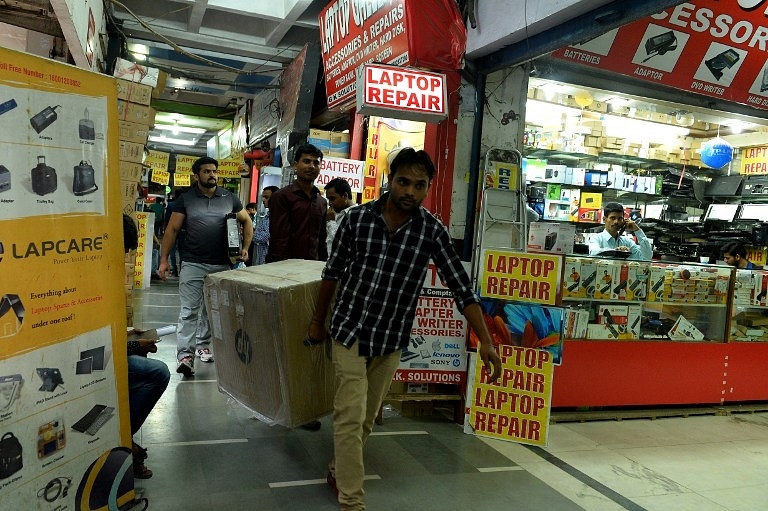Economy
Is There More To Cheer About On The Retail Inflation Front?

Perhaps yes. For, thanks to e-commerce companies, retail inflation might be lower than estimated.
Could retail inflation numbers be 25 basis points lower than what they are estimated to be? The State Bank of India’s economic research division thinks so. It says that the methodology to calculate the consumer price index (CPI) does not take into account the huge discounts offered by e-commerce companies.
The division had flagged this in its Ecowrap report of 14 September. It had pointed out that the CPI methodology only went by the maximum retail price (MRP) of products which already factored in discounts by the manufacturing company (like offering 20 per cent extra in a 100 gm toothpaste tube). E-retailers, on the other hand, offered discounts on the MRP.
Interestingly, the Reserve Bank of India’s (RBI) technical advisory committee (TAC) on monetary policy was thinking along the same lines and this may have been a factor in the surprisingly generous rate cut that the RBI announced earlier this month. Minutes of the TAC meeting released a few days back showed that three members who suggested a rate cut of more than 25 basis points noted the comfort on the inflation front “and with vendors engaged in e-commerce offering low prices, retail inflation may be lower than what the headline number suggests”.
Another Ecowrap report released on October 23 points out that the three top e-retailers, Flipkart, Amazon and Snapdeal, are offering heavy discounts during the festive season. This season accounts for 30-40 per cent of the total year’s sales. The current year, the report notes, has seen huge traction in new product categories like furniture.
The economic research division has re-estimated retail inflation, based on a price index it has constructed that takes into account the prices being offered by the online mega stores. “Only by considering the discount prices and that too for a select group of products, the CPI inflation would be at least 25 bps lower than the actual CPI numbers,” the report asserts.
But this is on the basis of just some products. The numbers involved in online retail are not something to be sneezed at, says the report. Flipkart offers over 30 million products across more than 70 categories, including books, media, consumer electronics and lifestyle. The report quotes a Flipkart claim that it managed to sell 10 lakh units within the first 10 hours of its ‘The Big Billion Day sale’. 75 per cent of the phones sold therein were 4G phones. It also notes that Amazon increased the total number of unique products from 18 million to 30 million and Snapdeal has put together 15 million unique products.
Making a strong pitch for the CPI methodology to factor in this phenomenon, the report points out that e-retailing has become the fastest-growing segment of the overall retail market, with a compound annual growth rate (CAGR) of around 56 per cent over the 2009-2014 period. The fastest-moving goods on this platform are books, apparel and accessories and electronics, constituting around 80 per cent of product distribution. The increasing use of smartphones, tablets and internet broadband and 3G/4G could further expand the already strong consumer base, it notes.
The report also points out that the housing index in the CPI may also not be reflecting housing inflation in urban areas accurately. The housing index, it says, considers the average of rent by classifying the dwelling on the basis of number of rooms. However, it argues, there may be different rent for the same type dwelling based on the quality of construction, location, size and other facilities.
A third issue the report highlights is that the price of new or improved products included in the CPI may not adequately reflect the characteristics of these products. “There are international comparison for this, but the magnitude of the overall bias due to these factors varies across countries, but is generally perceived to range between 50 to 100 basis points across countries.”
“The measurement bias,” the report concludes, “shows that measured CPI inflation may be already reflecting declining prices, or close to price stability.”
That should be something for the government to crow about.
Support Swarajya's 50 Ground Reports Project & Sponsor A Story
Every general election Swarajya does a 50 ground reports project.
Aimed only at serious readers and those who appreciate the nuances of political undercurrents, the project provides a sense of India's electoral landscape. As you know, these reports are produced after considerable investment of travel, time and effort on the ground.
This time too we've kicked off the project in style and have covered over 30 constituencies already. If you're someone who appreciates such work and have enjoyed our coverage please consider sponsoring a ground report for just Rs 2999 to Rs 19,999 - it goes a long way in helping us produce more quality reportage.
You can also back this project by becoming a subscriber for as little as Rs 999 - so do click on this links and choose a plan that suits you and back us.
Click below to contribute.
Latest